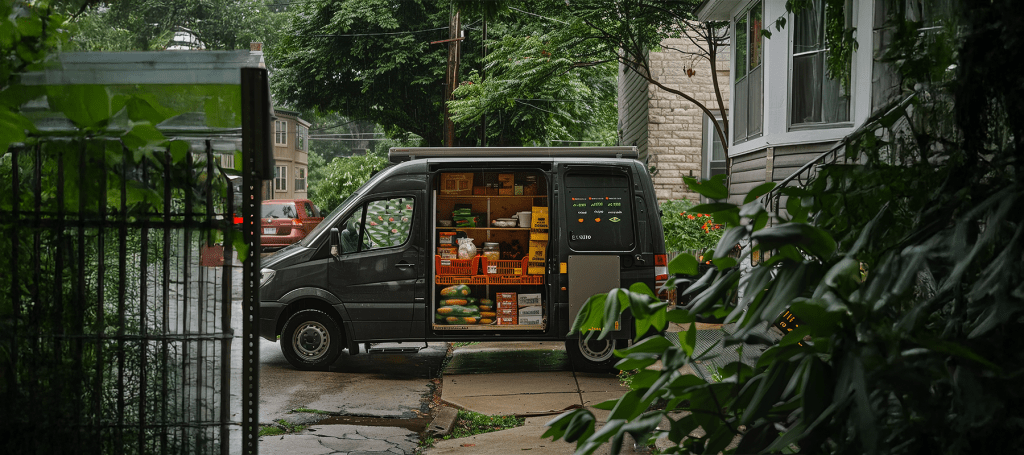Let us take some time off and wonder to find out the reasons why food deserts are fueling childhood obesity! I might share my experience, I am not going to forget the firsthand difference I have seen. Well, I grew up near a vibrant farmer’s market. I had easy access to crisp apples and leafy greens. However, being a public health worker in the inner cities of the USA, I had witnessed the harsh reality of food deserts in the USA.
In these neighborhoods, the nearest quality grocery store is miles away. So, the residents, particularly the obese urban poor, are always reliant on corner stores that sell chips, soda, and processed, shelf-stable foods. Due to this systematic lack of urban fresh produce access, nothing could stop child obesity from falling behind!
Local access to fresh produce and its impact on childhood obesity rates: An analysis
We have sobering, yet unsurprising data on the table. On analyzing the local access to fresh produce and its impact on childhood obesity rates, a stark correlation is revealed. Neighborhoods, often the low-income, minority-majority areas, are classified as food deserts in the USA. These areas significantly report higher rates of diet-related diseases.
Studies have revealed that a lack of supermarkets within a one-mile radius is associated with increased rates of childhood obesity. The reason is that the families are forced to go for cheaper, calorie-dense, nutrient-poor options. We cannot call it a failure of will; rather, it’s access that failed. After personally speaking with parents who are always struggling to find affordable fruits and vegetables for their kids, the devastating health consequences became a clear picture in my mind.

The impact of mobile grocery programs on child health and nutrition in poor neighborhoods – An evaluation
A few years ago, I took to volunteering with a non-profit running a mobile food market program. The overall mission was really simple: bring the grocery store to all people to access with ease. Here is where the narrative shifts from problem to solution. The mobile grocery programs have been named because the project is literally “grocery stores on wheels”, refrigerated trucks stocked with affordable and high-quality urban fresh produce for access. Our goal was to monitor dietary changes among the children after the introduction of mobile food markets.
A transformative change was noticed. One mother (Maria, 32) had tears in her eyes when she said her son used to depend on a bag of Takis for snacks, before the truck made it possible to have nutritious meals. Thanks to the mobile grocery programs, now her son is eating the little mandarin oranges the staff is bringing.
That is why he sleeps better, and the feedback from his pediatrician is that the child is stabilizing. From this personal review, we can confirm the broader data – pilot programs highlight that using the mobile grocery programs consistently could increase fruit and vegetable intake by as much as half to one serving per day. This direct, reliable urban fresh produce access has thus proven a powerful antidote to childhood obesity.
Effectiveness of mobile grocery programs vs. traditional interventions – A comparison
Comparing the effectiveness of mobile grocery programs vs. traditional interventions reveals that the difference is determined by one of immediacy and trust. That is to say, the traditional efforts, which include building a new supermarket, often take years to be accessed and also require massive capital. In the meantime, the mobile grocery programs could be deployed almost instantly. Furthermore, the small, personalized nature of mobile food markets is effective enough to build community trust – it is something that the large chain stores often fail to achieve in low-income neighborhoods.
We did not just sell carrots; we were even providing a consistent source of urban fresh produce access from familiar faces. Hence, this community-centric model has become the key strategy to fight childhood obesity and the cycle of obesity among the urban poor.

What are the barriers to implementing mobile food markets for reducing food deserts in major US cities?
Now scaling up is, of course, a challenging uptake! At the time of evaluating the barriers and opportunities for scaling mobile produce programs in the US cities, operational challenges that include inconsistent funding, navigating complex city regulations, and ensuring the long-term economic viability of the mobile food markets become the major hurdles. For increasing the availability of fresh fruits and vegetables in the low-income areas, we need proper strategies that go beyond simple sales.
From my viewpoint, success calls for public-private partnerships, leveraging government subsidies, such as SNAP/WIC incentives at the point of sale, and even integrating nutritional education. We have to view mobile grocery programs as the essential infrastructure for eradicating food deserts in the USA and reversing the devastating trend of childhood obesity. Not as a charity!
Coming to the end
Moving to the path that leads to food equity. The connection between food deserts in the USA and childhood obesity is undeniable, as well as tragic for the obesity urban poor. However, the mobile grocery programs have success stories to tell that verify a clear path forward. We have made it possible to empower families like Maria’s and many more to choose health by delivering reliable, affordable, and high-quality urban fresh produce access directly to the underserved communities. These mobile food markets are more than just a transaction. They stand out as the vital tool for community health and a beacon of hope in the fight against childhood obesity.

Vicky collaborates closely with doctors, scientists, and professionals in the medical and pharmaceutical industries. Having worked with SBU Community Clinic in the USA, he is dynamic in writing and publishing health-related guest blogging services, offering valuable insights in the healthcare field.














